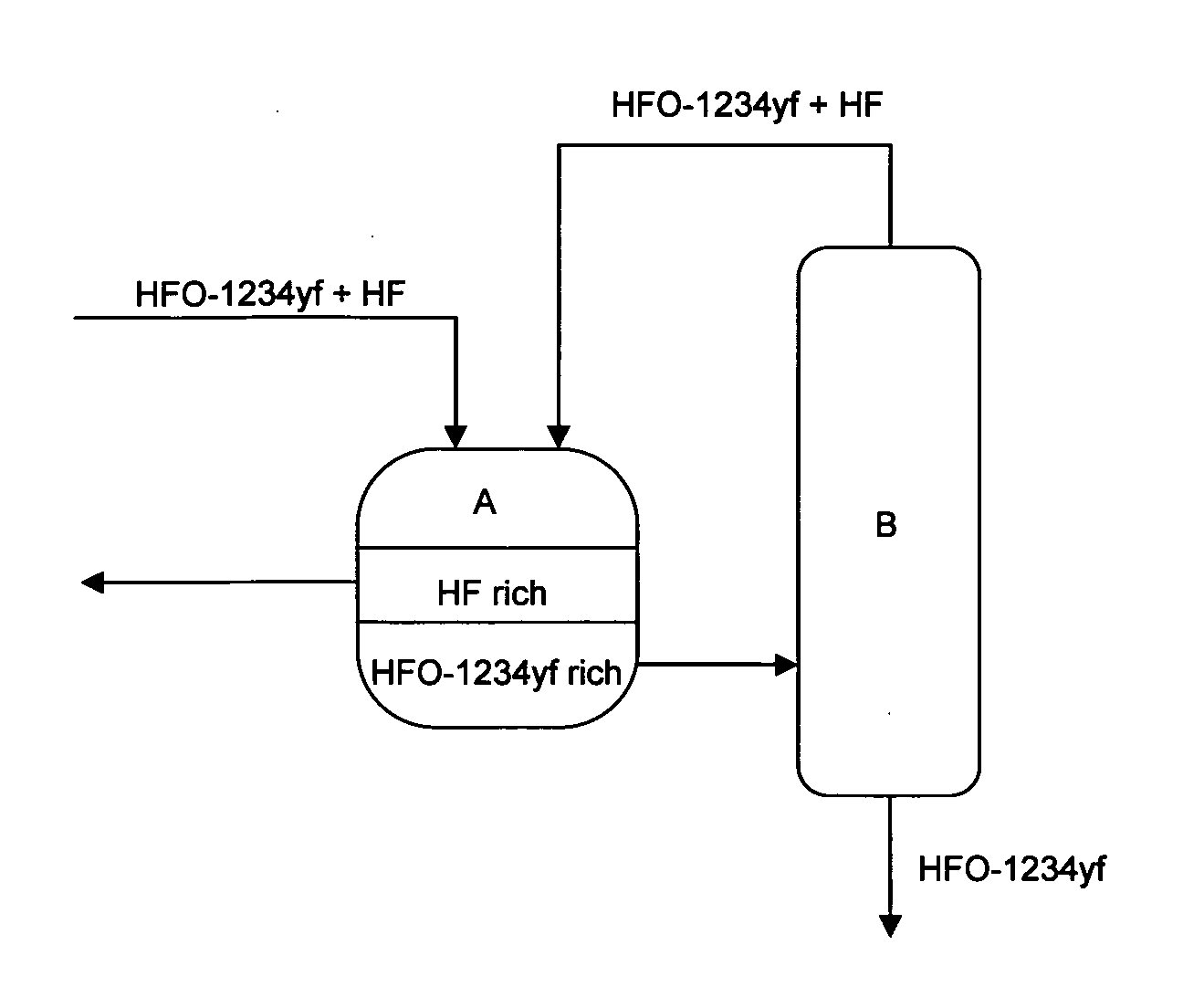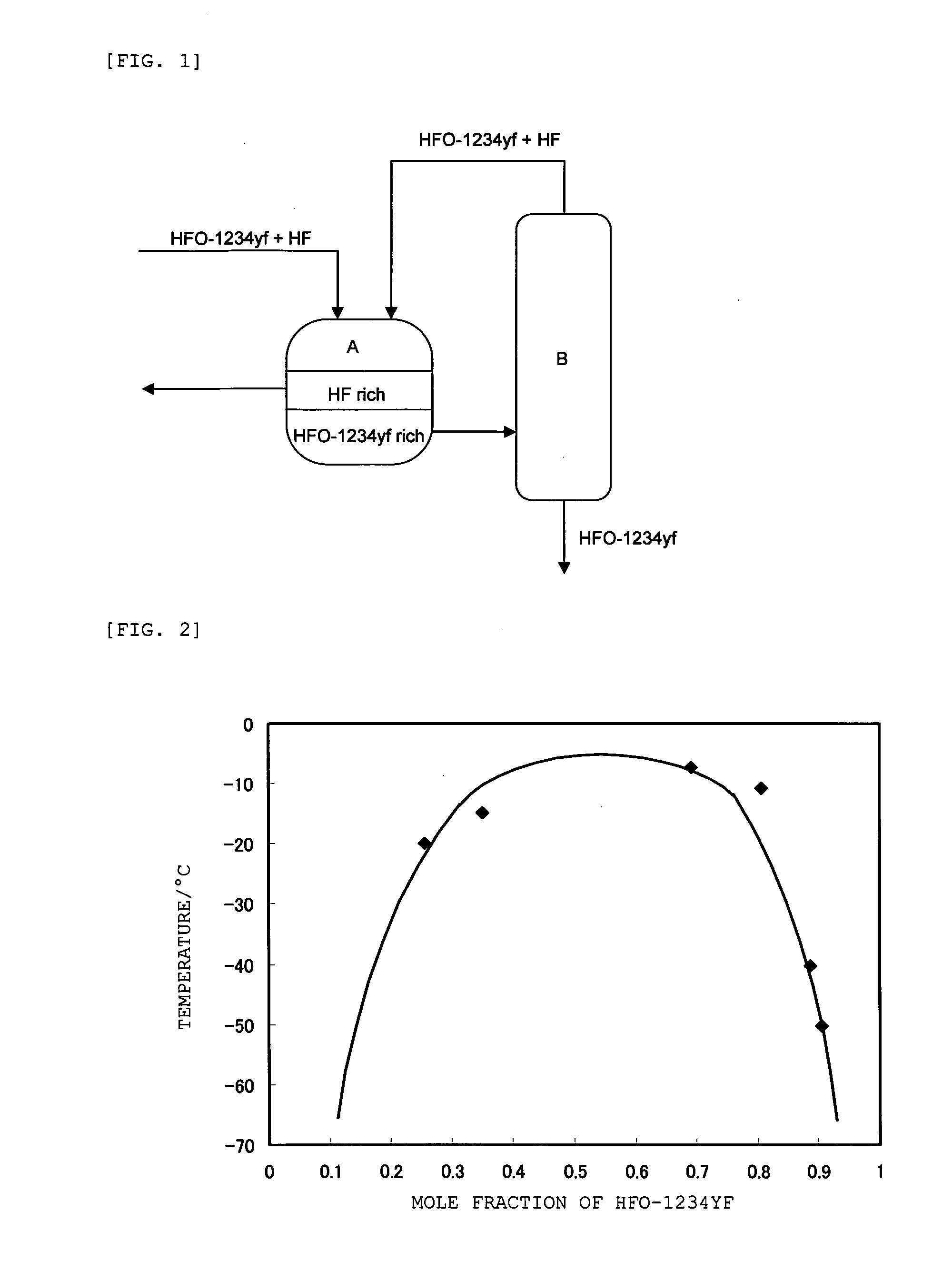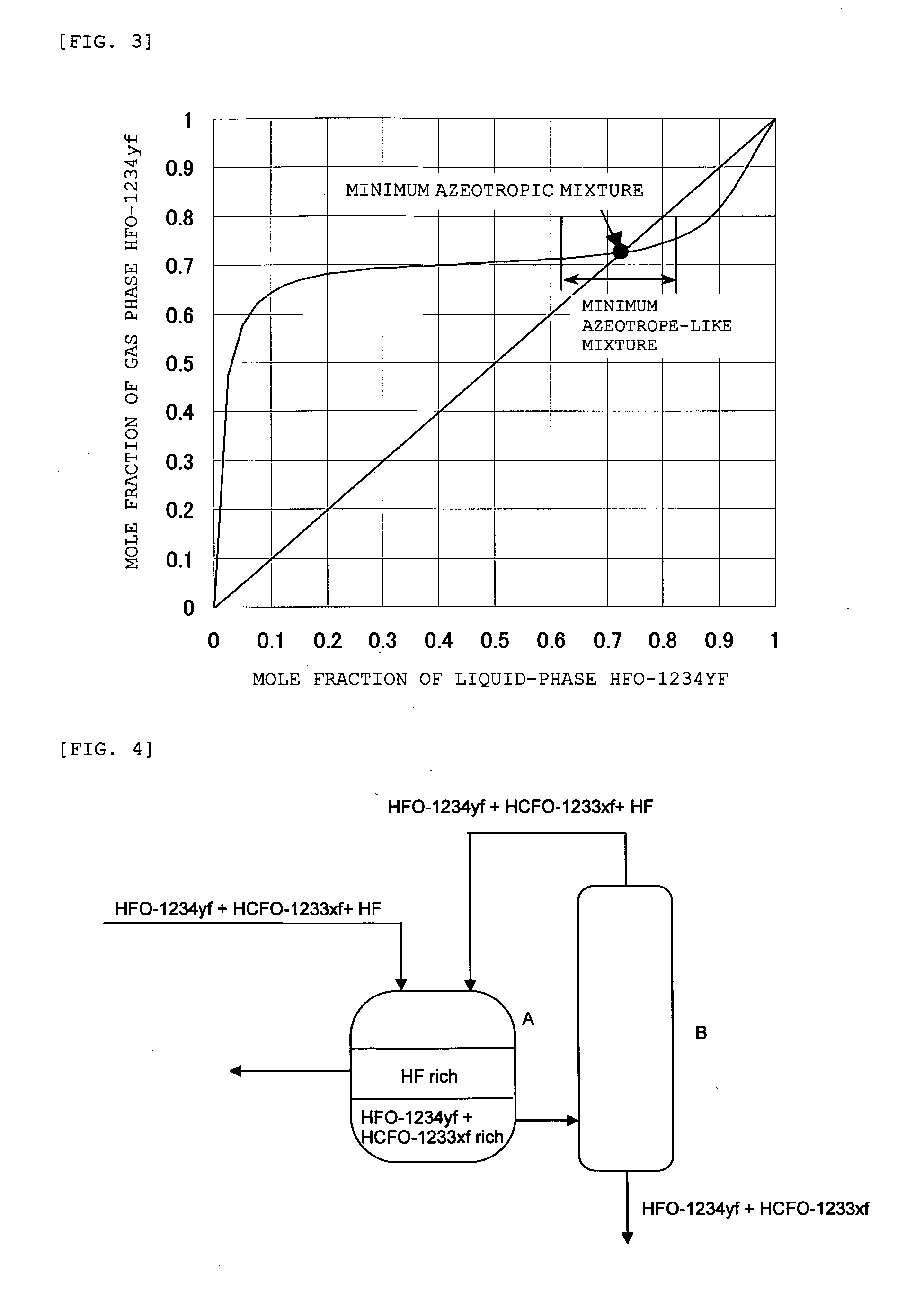Method for purifying 2,3,3,3-tetrafluoropropene
a technology of tetrafluoropropene and tetrafluoropropene, which is applied in the field of purifying 2, 3, 3, 3tetrafluoropropene, can solve the problems of large industrial wastewater discharge, increase production costs, and undesirable environmental protection and production costs, and achieves simple and economically advantageous conditions
- Summary
- Abstract
- Description
- Claims
- Application Information
AI Technical Summary
Benefits of technology
Problems solved by technology
Method used
Image
Examples
example 1
[0070]HF was separated from a mixture containing HFO-1234yf and HF by the method described below. This method is described based on the flow diagram shown in FIG. 5.
[0071]A mixed gas (S1) of HFO-1234yf and HF shown in Table 1 below was first condensed, and then introduced to a separation tank. In the separation tank, the liquid mixture was cooled to −40° C., and separated into Fraction 1 (F1) containing HF as a main component and Fraction 2 (F2) containing HFO-1234yf as a main component.
[0072]Fraction 2 (F2) was fed to a distillation column and distilled (column top temperature: 28° C., pressure: 0.7 MPaG), and the remaining HF was removed. A mixture of HF and HFO-1234yf was withdrawn from the top of the column and recycled as Fraction 3 (F3) back into the separation tank. Then, Fraction 4 (F4) that does not substantially contain HF was obtained from the bottom of the column, and fed to the next step.
[0073]Table 1 shows the composition of the product in each step described above.
[00...
example 2
[0075]HF was separated from a mixture containing HFO-1234yf and HF by the method described below. This method is described based on the flow diagram shown in FIG. 6.
[0076]A mixed gas (S2) of HFO-1234yf and HF shown in Table 2 below was first condensed, and then introduced to a separation tank, cooled to −40° C., and separated into Fraction 5 (F5) containing HF as a main component and Fraction 6 (F6) containing HFO-1234yf as a main component.
[0077]Fraction 6 (F6) was fed to the distillation column and distilled (column top temperature: 28° C., pressure: 0.7 MPaG), and the remaining HF was removed. In the distillation step, the mixture of HF and HFO-1234yf was withdrawn from the top of the column as an azeotrope-like composition, and recycled as Fraction 7 (F7) back into the separation tank. Then, Fraction 8 (F8) that does not substantially contain HF was withdrawn from the bottom of the column, and fed to the next step.
[0078]The above process enables separation of HF from HFO-1234yf ...
example 3
[0079]HF was separated from a mixture containing HCFO-1233xf, HFO-1234yf, and HF by the method described below. This method is described based on the flow diagram shown in FIG. 7.
[0080]First, a mixed gas (S3) of HCFO-1233xf, HFO-1234yf, and HF shown in Table 3 below was condensed into a liquid mixture, and this liquid mixture was introduced to a separation tank. In the separation tank, the liquid mixture was cooled to −40° C. and was thereby separated into two phases, i.e., an upper liquid phase (F9) comprising HF as a main component and a lower liquid phase (F10) comprising HCFO-1233xf and HFO-1234yf as main components.
[0081]The lower liquid phase (F10) was fed to a distillation column and distilled (column top temperature: 28° C., pressure: 0.7 MPaG). Thereby, a column top product containing HFO-1234yf and HF was withdrawn and recycled back into the separation tank. Then, a column bottom product that does not substantially contain HF was withdrawn from the bottom of the column and...
PUM
| Property | Measurement | Unit |
|---|---|---|
| Temperature | aaaaa | aaaaa |
| Fraction | aaaaa | aaaaa |
| Mass flow rate | aaaaa | aaaaa |
Abstract
Description
Claims
Application Information
 Login to View More
Login to View More - R&D
- Intellectual Property
- Life Sciences
- Materials
- Tech Scout
- Unparalleled Data Quality
- Higher Quality Content
- 60% Fewer Hallucinations
Browse by: Latest US Patents, China's latest patents, Technical Efficacy Thesaurus, Application Domain, Technology Topic, Popular Technical Reports.
© 2025 PatSnap. All rights reserved.Legal|Privacy policy|Modern Slavery Act Transparency Statement|Sitemap|About US| Contact US: help@patsnap.com



